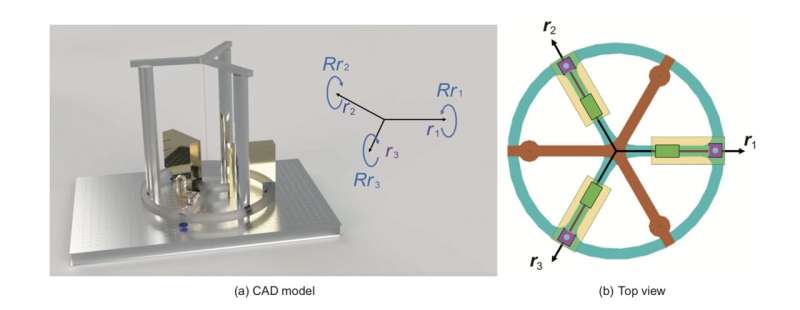This article has been reviewed according to Science X's editorial process and policies. Editors have highlighted the following attributes while ensuring the content's credibility:
fact-checked
trusted source
proofread
Detecting gravitational waves with an interferometric seismometer array on the lunar near side

A team lead by Department of Astronomy, Beijing Normal University, recently proposed a promising plan to detect gravitational waves (GWs) by putting seismometers on the moon's surface. Their research is published in the journal Science China Physics, Mechanics & Astronomy.
By utilizing the moon as a Weber bar-style resonant mass, the experiment capitalizes on detecting deci-Hertz gravitational waves. The researchers plan to build an array of small laser interferometric seismometers on the moon surface. The moon's natural resonant frequency, ranging between 0.1 and 1Hz, holds the potential for detecting gravitational waves resulting from significant astrophysical events like mergers of intermediate-mass black holes (IMBHs) and collisions of neutron stars.
Installing seismometers would make it possible to observe changes in the moon's shape and position caused by the passing of deci-Hertz GWs. This frequency range fills the gap of GW spectrum covered by existing detectors, such as ground-based detectors (LIGO et al.) and ongoing space-based antennas (LISA and others), which exhibit peak sensitivity at several Hertz and milli-Hertz (10−3 Hz), respectively.
The experiment's design and deployment strategy have been outlined. To monitor the moon's translational and rotational motions, the team plans to use seismometers that sense six degrees of freedom (DOFs). All mechanical DOFs are weakly cross-coupled. Moreover, a two-stage sensor system is proposed for monitoring the moon.
For the lunar seismic displacement, interferometric sensors would be used and for low-frequency and high-DC displacement such as moonquakes, the Birmingham optical sensor and electromagnetic actuator (BOSEM) would be used. The hardware design could plausibly reach a sensitivity of 10−11 m per square root Hertz. That is, for a signal with the frequency of 1 Hz, the proposed design can detect the minimum vibration of lunar geology is 10−11 m.
The location of the array is also carefully considered. Due to the absence of an atmosphere, the moon holds significant temperature variations between day and night. Four cold spots have been found to satisfy stable, low-temperature conditions. However, the selection of the site depends on the future moon mission to provide more accurate information.
Redundancies are incorporated in the proposal to address mission challenges. For example, each seismometer has six photodetectors, but only four are necessary for measuring local topography. The deployment pattern of the five seismometers is also carefully designed to capture the local lunar surface deformations and is able to extrapolate to larger deformations in surrounding regions. For the most extreme scenario, only two widely separated seismometers can claim the detection.
However, challenges lie ahead. Overwhelming background thermal seismic noise is not avoidable. Additionally, data acquisition, storage, and processing are challenging. A reliable and high-bandwidth communication link between the seismometers and Earth would be critical. Despite these requirements, ongoing advancements and future solutions are anticipated to address these difficulties.
Overall, the proposal to construct an interferometric seismometer array on the moon for detecting deci-Hertz gravitational waves (GWs) has the potential to contribute to GW physics research and facilitate the exploration of phenomena like IMBHs. Based on the unique environment and characteristics of the moon, it may advance our understanding of the universe and expand the field of GW astronomy.
More information: Junlang Li et al, Detecting gravitational wave with an interferometric seismometer array on lunar nearside, Science China Physics, Mechanics & Astronomy (2023). DOI: 10.1007/s11433-023-2179-9
Provided by Science China Press





















